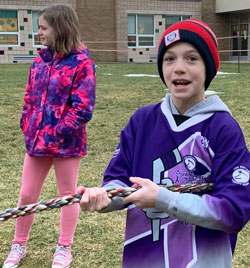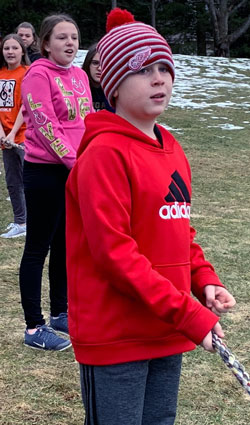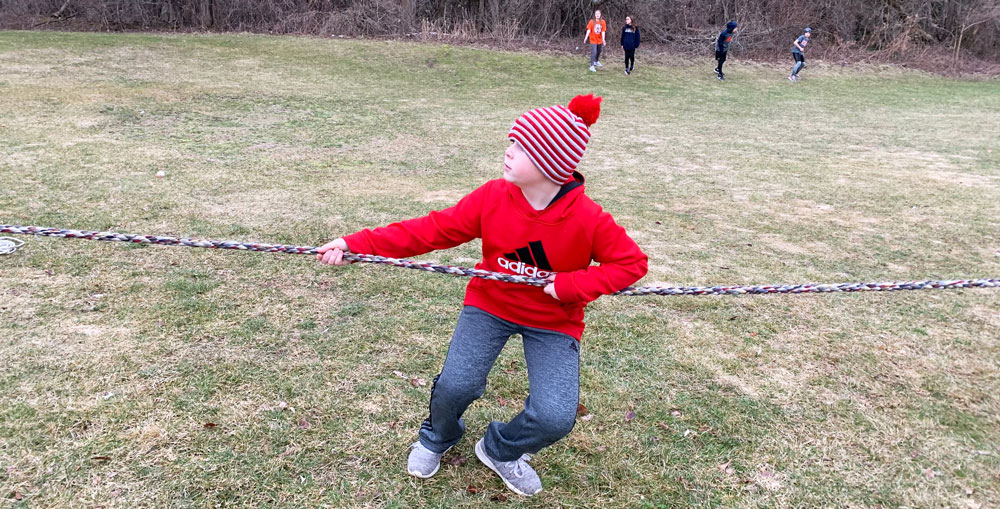The odds seemed stacked against the red team: the group of smaller stature students squared off with larger ones — the blue team — for a rousing game of tug of war.

The Nickels Intermediate School fifth graders grabbed sides of a long rope on the grassy schoolyard behind their classroom. With orders to start from teacher Josh Smith, the tugging began, with the smaller students’ defeat appearing certain.
But then, from the sidelines, a third group of students — the white team — rushed in, joining the smaller students, and tugged the rope successfully to their side. The scrappy underdogs had won.
Cheers from one side were joined with cries of “not fair” from the other.
“We were winning at first. But then we started losing,” said fifth grader David Perrot, who was on the bigger-student team. “It was like the Americans and the British.”

Allies are the Wild Card
David was right on with his analogy. The simulation is a favorite activity each year in Smith’s class, launching a social studies unit on the Revolutionary War. That’s when colonists formed the Continental Army to rise up against the British, from 1775-1783.
Fifth grader Oliver Kramer made another observation: the third group of students was like the French Army, which joined the Continental Army as an ally to help defeat the British.
“I just had some background,” Oliver said, about what the group represented. “This was to show us what the Revolutionary War kind of looked like in a form we would know.”
After returning to the classroom, Smith explained to students the purpose behind the activity. “Here’s the thing,” he said. “When I made the teams there was no way the red team could win.”

But the white team jumping in as allies to the smaller students — plus the sweet incentive of candy Smith promised the smaller students if they won — helped change the game.
“The candy represents the Continental Army’s motivation to win,” he said. “They were fighting for so much more than the British Army was.”
Smith has led the activity for the past 14 years. “I feel like kids at this age like anything where they can get up and move. For history, if you can make it fun and interactive, they really enjoy it and grasp onto the concepts.”
He explained to students that the Continental Army was under-resourced compared to the powerful British Army, and that the French played a key role in the American victory. “We were very fortunate to have allies in the French military. Without them the outcome might have been much different,” Smith said.










